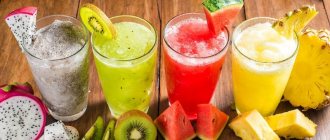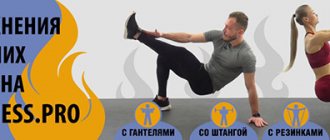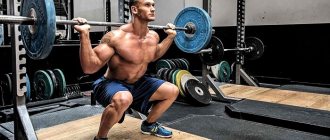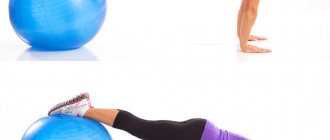Protein bars
Release form: powders
What for: Protein is often drunk right after a workout, saying: “Muscle mass, muscle mass!” But without carbohydrates, which everyone forgets, protein powder is practically useless in the matter of instant muscle building. Use it just to compensate for your overall protein deficiency. The body will find somewhere to put it, for example, make testosterone from it.
https://youtu.be/lI-yCJ4aAZQ
There are “fast” and “long” proteins. The former are more biologically accessible and instantly provide your body with energy and building material. The latter release protein gradually, over several hours. It is not difficult to distinguish them: any whey is “fast”. Any combination containing casein protein (casein) is “long”.
How to take: “Fast” protein is consumed in the morning (1 serving 20 minutes before breakfast) and immediately after fat burning workouts. In general, I am a convinced supporter of a predominantly protein breakfast; this allows you to gently raise your blood sugar level after a night's sleep and further boost your metabolism. Drink “long” 30-90 minutes after the last meal, at night, so that the body has proteins at hand even in sleep.
I recommend: Of the sports supplements that my clients have come across, I can recommend the “fast” Zero Carb from VPX for breakfast. For the night I wholeheartedly recommend “Infusion” from SAN. True, this is more than protein - such products are called “meal replacement”. It contains different types of protein (which are absorbed at different times and therefore provide your body with nutrition throughout the night), as well as vitamins and a dosed amount of carbohydrates that does not harm your figure.
Form: you'll laugh, but these are bars!
Why: Perhaps the most convenient source of protein and carbohydrates: no need to stir or drink - tear open the package and eat to your health! Use to suppress hunger between main meals.
How to use. A couple of high-quality bars consistently discourage interest in food for exactly 3 hours, even for such an eternally hungry swallower as I am. But the daily norm, according to my observations, is no more than 2-3 bars. If you exceed the dose, you may experience problems with appetite!
I recommend: VPX “Zero Impact”.
* “Fast” protein - before breakfast and after training
** "Fast" protein for breakfast, "long" protein - before bed
to your health
There is also a whole range of sports supplements and near-medicinal products that you can use in your diet, regardless of the goals that you are pursuing at a certain point in time.
cardioprotectors They should be taken before training in the hot season and during periods of endurance training. These include the L-carnitine already described above, as well as preparations containing potassium and magnesium - substances responsible for the uninterrupted functioning of the heart. For example, potassium and magnesium aspartate.
vitamins and minerals I do not agree with the opinion prevailing among athletes and a number of coaches about the need to take increased doses of vitamins. Therefore, as a trainer, I prefer trivial pharmacy multivitamins in normal dosages. As a rule, this is one serving immediately after breakfast. I am not advocating for taking additional vitamins that are supposedly beneficial to the athlete/trainer - C, E and B separately. There are more than enough multivitamins!
chondroprotectors American trainers have a good saying: “If you don’t play sports, you’ll end up seeing a cardiologist. If you play sports, you’ll see an orthopedist!” To prevent the last part of this wonderful phrase from affecting you, regularly take chondroprotectors - supplements that facilitate the regeneration of cartilage tissue and the restoration of the ligamentous apparatus as a whole. Even if you rarely go to the gym or don’t go at all, you should take chondroprotectors to prevent diseases of the musculoskeletal system. How often? This information should be in the instructions for use.
We invite you to familiarize yourself with the signs of hormonal imbalance in women.
What elements are missing in the muscles?
Based on some symptoms, you can easily recognize which elements the muscles need.
- Convulsions appeared. This may indicate a lack of vitamins A, B, D, and E in the body. Often, cramps appear more often in the spring, when a person experiences vitamin deficiency. To reduce the frequency of seizures, you should also consume foods with magnesium, calcium, vitamin D, E and B6.
- Muscle weakness, rapid onset of fatigue. Occurs when consuming large amounts of refined foods - foods low in nutrients. A diet high in potassium and manganese will help correct the situation. Often muscle weakness is the cause of acute vitamin E deficiency. If a person lacks vitamin E for a long time, his muscle cells simply die.
- Muscle spasms. You can alleviate the condition by frequently consuming foods with magnesium, calcium, vitamins B6 and D. They relax the muscles.
- Inflammatory processes and swelling of connective muscle tissue. Such troubles are much less common when consuming large amounts of foods with vitamins C, B5 and calcium.
It is advisable to obtain these useful elements naturally. However, if there is a shortage of elements, a specialist may prescribe a course of multivitamin preparations. Today, pharmacies sell many highly effective products containing the entire range of essential vitamins and elements.
How long does it take to recover after training?
There are several phases of the muscle recovery process.
- The first phase begins immediately after the end of the workout and lasts about an hour. At this time, the body especially needs nutrients, necessary not only for further muscle growth, but also for replenishing energy reserves, after significant expenses. Therefore, during this period it is important to consume food and sports supplements based on proteins (amino acids) and carbohydrates. But this is only a partial recovery.
- Full muscle recovery can take anywhere from two to five days, and the larger the muscles trained, the longer they take to recover. For example, small muscle groups, such as biceps, triceps, are restored in 1-2 days, medium and large muscles: back, chest, legs, deltoids - up to 4-5 days. Although the duration of healing as a result of damage to muscle fibers depends on the resulting microtraumas. The recovery process also depends on the individual metabolic rate.
Vitamin E
Vitamin E is used for various purposes. Many people know it only as a remedy against stretch marks and other skin defects.
There is good news for athletes too.
Vitamin E is a very powerful antioxidant that helps protect cell integrity.
Intense training produces free radicals in the body, which are toxic byproducts of cellular respiration. The accumulation of these particles in the body causes deterioration in performance, muscle growth, recovery and immunity. Vitamin E acts on free radicals and “flushes” them out of the body. The end result is reduced oxidative stress and reduced muscle damage.
Complex amino acids
Release form: capsules, tablets, caplets
Why: I seriously doubt that products with such names contain many amino acids. Rather, it is a regular “fast” protein, only in a convenient package. On the road or after a long night in an ambush under the enemy's nose where you can't get a shaker, this is a good replacement for a protein shake.
How to take: In any training regimen, except hypertrophy, - 2-3 tablets 2-3 times a day, as a replacement for protein powders. And in the midst of a long hypertrophy program - 3 tablets twice a day, with food or a gainer, and you will also drink protein.
I recommend: Hardlabz Aminoz. Just keep in mind that not all people’s stomachs and intestines easily tolerate amino acids taken on an empty stomach. If this is your case, try eating them with food.
Methods for muscle recovery after training
There are active and passive muscle recovery.
- Passive recovery - complete rest and rest from any stress, that is, abstaining from them for 2-3 days or until complete recovery. This method is suitable for all athletes, especially if there are symptoms of overtraining. The only disadvantage of the method, if used frequently, is the lack of adaptation to new loads; the athlete stops developing.
- Active recovery - involves a set of active measures, such as: cardio exercise for 10-20 minutes after training, muscle stretching to remove lactic acid and toxins, as well as sports massage.
Gainer
Release form: powder
Why: My favorite product! The combination of easily digestible proteins and carbohydrates not only promotes rapid weight gain, but also provides a hurricane of energy before training, and also significantly speeds up recovery after.
How to take: On training days, 30-45 minutes before training and immediately after. On rest days, 1 serving in the afternoon. In the endurance training mode, you can do it three times a day: before and after training, as well as at night. And never eat gainer for breakfast! In this case, the weight will grow exclusively on your sides.
I recommend: Take “Myodrive” from SAN.
Worth remembering
No amount of creatine with protein will ever correct technical errors or help with lack of sleep. In addition, be aware that no supplements can replace a nutritious, regular and healthy diet. And don’t forget that even harmless and certified products, if used thoughtlessly and excessively, can cause irreparable damage to health. If you suffer from food allergies, metabolic disorders, diabetes, chronic diseases of the heart, kidneys, liver or gastrointestinal tract, then before taking any sports nutrition you should definitely consult an adequate, qualified doctor.
We suggest you familiarize yourself with Diet after liver transplantation
Factors influencing muscle growth
If you decide to build muscle mass, you need to be prepared for the fact that you will have to spend several months on it. To improve results, you need to take vitamins. They not only accelerate muscle growth, but also improve a person’s well-being. He feels more energetic and resilient.
Muscles are made up of fibers, and their number is determined at birth. To increase muscle mass, work on fiber thickness. During exercise, it is partially destroyed, thereby becoming thinner.
During training, the thickness of muscle fibers increases, so vitamins and microelements are needed to restore them.
When a person rests, the synthesis of protein threads begins. As a result, the muscles are restored. But the process is impossible if the food is low in nutrients. Therefore, during active training you cannot do without vitamin complexes.
Physical exercise
To grow muscles you need physical activity. At the same time, the program itself is not important - the main role is played by regular exercises that cause fatigue. If the goal is to gain weight, then the load should be increased compared to the standard one.
Muscle fibers can be compared to a sponge. During classes they are “squeezed out”, and after completing the training, when it’s time to rest, they begin to “fill up”.
The volume of fibers recruited during exercise is influenced by the following factors:
- working weight;
- the pace at which a person works;
- how many approaches he does;
- amplitude;
- exercise technique.
Athletes who engage in bodybuilding at a professional level perform 8-9 repetitions to build mass. To build a muscle corset and strengthen the relief, you need 10 to 15 repetitions. You need to train thoughtfully, focusing on the sensation of your muscles and joints. They should be involved in their work as much as possible.
Human muscles are composed of white and red muscle fibers.
One of the most effective exercises for increasing mass can be called push-ups. If the goal is to develop the leg muscles, perform squats with a barbell. Beginners may have pain in their knees and ache in their lower back after training. This means they are doing the exercises incorrectly.
Even experienced athletes should not neglect rest; there should be a break between classes. If muscle pain appears after visiting the gym, this means that the exercise was performed correctly. Muscle mass began to grow.
Diet
The main rule for gaining weight can be called the choice of products. The diet should be balanced. Those fitness fans who switch to a sports diet are doing the right thing. It is based on high-calorie nutrition.
The body must receive large quantities of unsaturated fats; full recovery after training is impossible without proteins and carbohydrates. In sports nutrition, carbohydrates play a leading role, but you need to choose their sources correctly. If your calorie intake is excessive, it will lead to the formation of fat deposits, and muscle growth will not begin.
Sources that provide the body with the right carbohydrates include cereals, fruits and vegetables. Mushrooms are included in the diet. The right fats can be obtained by eating fish and nuts. Whole grain bread and vegetable oils are introduced into the diet.
It is necessary to choose the right time to eat. In the morning, the body needs carbohydrates, they increase performance. At lunch, a person eats the most food, and in the evening, red meat and vegetables will help him recover.
For muscle growth and recovery, diet is a fundamental factor, since a person receives the main energy and vitamins from foods.
If an athlete trains for more than 2 hours at a time, they need more carbohydrates to recover. In this case, you need to introduce slow carbohydrates into your diet. They are found in cereals and grain products, and they are also found in vegetables.
After exercise, muscles need protein; it is required to restore and build muscle tissue. But you don’t need to consume more than 450 g per day; it’s better to stick to the norm - from 100 to 170 g.
If you look at the daily diet, then from 30 to 40% should be proteins. The proportion of fats should be from 10 to 20% and carbohydrates - from 30 to 50%.
To form a muscle corset, beginners need to calculate their calorie consumption per day. Adds 20% to the resulting figure, and then begins training. It is considered safe for health if weight increases by 600 g in one week.
What physical activity is acceptable when restoring muscles after training?
The benefits of cardio training after exercise is the acceleration of the removal of lactic acid from the muscles, that is, breakdown products, and this significantly speeds up recovery. Cardio should be light, without raising your heart rate to the limit. Walking on a treadmill, stepper, orbit track, as well as an exercise bike are suitable.
Stretching allows you to return your muscles to their normal state, maintaining their elasticity and preventing them from becoming stiff. Tight and stiff muscles are prone to injury and are slower to recover and grow.
The only thing is that such muscles need light stretching, but in no case dynamic and strong stretching, otherwise they can be easily injured, and they will not heal for several months.
BCAA
Release form: tablets, capsules, powder
Why: BCAAs are also amino acids, but there are only three: isoleucine, leucine and valine. According to a number of studies, skeletal muscles contain the most of them. I use BCAAs (and encourage you to do the same) to help you lose much less muscle during your fat-burning or endurance-building periods.
How to take: When you train - 5 capsules before and immediately after training. On rest days, take 2 capsules with regular meals.
I recommend: SAN “BCAA pro-125”.
Vitamin D
Vitamin D (calciferol) is important for muscle growth and recovery. Calciferol is unique in that the body requires exposure to direct sunlight to stimulate its production. Of course, we've all heard that vitamin D is important for preventing diseases such as soft bones in adults and rickets in children, and that many people suffer from a deficiency of this substance. But how can it affect muscle growth and recovery?
You might be surprised, but vitamin D is the most important of all vitamins when it comes to testosterone production!
Some studies have shown that supplementing with this vitamin, compared with taking a placebo, significantly increases explosive strength in adults after 12 weeks of strength training.
Vitamin D also plays a key role in protein synthesis, which is partly due to its effect on testosterone production. Studies have shown that vitamin D supplements lead to a 20% increase in testosterone in men with low levels of this anabolic hormone. Additionally, calciferol is important for bone health. Working in conjunction with magnesium and calcium, it supports the development of bone tissue.
Sports nutrition and vitamins for muscle recovery
- Breakfast: immediately after sleep - sports nutrition (amino acids or protein shake).
- After half an hour: simple complex carbohydrates (cereals: oatmeal, brown rice, wheat, corn honey, dried fruits, fruits).
- Snack: fruits or berries with cottage cheese.
- Lunch: Complex carbohydrates (fiber-rich grains), vegetables and greens, eggs or lean meat.
- Half an hour before training: full cycle amino acids.
- Immediately after training: BCAA.
- After half an hour: gainer or protein shake with banana milk. Or, instead of sports nutrition, eat carbohydrates (cereals, vegetables, fruits) and proteins (cottage cheese, eggs or meat).
- Dinner: Protein-rich foods (meat, poultry, fish, dairy products, eggs) vegetables with butter.
- Before bed: dairy products, amino acids or casein protein.
Throughout the day, and not just after strength training, athletes need more nutrients, vitamins and minerals than untrained people. The rate of absorption of nutrients from food is much slower than that of sports nutrition and pharmaceutical dietary supplements, therefore, for a speedy recovery and prevention of catabolism, it is necessary to provide “first aid” as a sports nutrition supplement.
A full cycle serving should be taken before training or before bed, while BCAAs are needed immediately after training and after a night's sleep. Amino acids not only accelerate muscle recovery and growth, but also prevent destruction under the influence of cortisol, which is produced after training and sleep.
Sports nutrition for those who are gaining muscle mass. In addition to essential nutrients, creatine and glutamine accelerate recovery and remove waste products. Take supplements immediately after training along with BCAAs.
Vitamins and minerals
During intense exercise, athletes need all the minerals and vitamins for muscle recovery, especially B vitamins, ascorbic acid, zinc, and magnesium. You can take courses of vitamin and mineral complexes designed specifically for athletes, following the dosages and manufacturer’s instructions.
Main conclusions
During intense workouts in the gym, the body becomes fatigued. To achieve good results, it is important to correctly and effectively combine rest, recovery, and training regimen. The main role is played by sports nutrition, vitamin complexes, amino acids.
Expert recommendations for restoring the body:
- proper rest and sleep mode – healthy sleep lasts at least 8 hours;
- relaxing massage;
- water treatments - sauna, steam bath, hot bath;
- thorough preparation for training - warm-up, stretching;
- high-quality sports nutrition immediately after classes, half an hour later and before bedtime;
- use of amino acids, vitamin complexes;
- cold and hot shower;
- healthy, balanced diet - fruits, vegetables, herbs, protein foods;
- drinking plenty of water – restoring the water-salt balance.
In addition to all of the above, walking in the fresh air, creativity, and spending time with friends or family will help restore the body. It is important to enjoy such events and enjoy life.
L-carnitine
Release form: tablets, capsules, ampoules
Why: Carnitine makes it easier for your body to access fat reserves. I’m not ready to say that L-carnitine helps you lose weight, but it really increases endurance and has a beneficial effect on the health of the cardiovascular system.
We invite you to familiarize yourself with Jumping rope before and after photos
How to take: 1 tablet 2 times a day with food when training endurance or strength. And with any type of training, if you feel that your heart is under heavy load (for example, on a hot summer day).
I recommend ALCAR 750 from SAN.
Creatine
Release form: powder, tablets, capsules
Why: Creatine is a precursor to creatine phosphate (CP), one of the main sources of energy for muscle work. CF provides exclusively short-term strength work (the first 3-5 repetitions of the bench press, for example). It is generally accepted that taking creatine-containing supplements can increase strength. For some this is true, but for others this supplement has no effect. Try it - maybe this food will become yours.
How to take: 2-3 g once a day, along with a gainer. Just be sure to drink at least three glasses of plain water afterwards. Creatine has an unpleasant ability to absorb liquid, which can lead to cramps, bloating, and even injury to connective tissue, for which normal hydration is extremely important.
I recommend Creatine Monohydrate.
Glutamine
Release form: powder, granules, capsules
Why: With heavy physical activity, glutamine reserves in the body are depleted, and this negatively affects the immune system and reduces recovery abilities. Therefore, if you have more than 5 training hours per week, you should use this supplement.
https://youtu.be/lLSj7QTQkXE
How to take: Take a dose 2 times a day, morning and evening 15 minutes before meals - and you will recover normally, endure stress more easily and get sick less.
I recommend Hardlabz “GAP” Capsules. They are much more convenient than powders.
Other beneficial elements for muscles
- Polyunsaturated fatty acids. First of all, these are omega-3 and omega-6 fatty acids. They significantly improve the elasticity of muscle fibers.
- Water. It maintains tone throughout the body and accelerates the course of all biochemical reactions. Drinking plenty of fluids is an excellent remedy for seizures. If the body does not have enough fluid, the muscles may not work properly - they get tired faster, wear out ahead of time, they lose flexibility, which leads to cramps. Also, lack of fluid causes oxygen deficiency.
- During intense physical activity, muscles can be damaged. Therefore, to restore their performance, it is advisable to eat “strengthening” foods high in protein: cottage cheese, chicken, turkey, eggs.
- Sulfur is responsible for the creation of collagen, which affects the elasticity of muscles and ligaments. You can get it naturally from legumes, garlic, lentils, eggs, red peppers, sesame seeds, chickpeas, wheat germ, Brussels sprouts, etc.
- In order to prevent inflammatory processes from starting in the muscles, it is necessary to consume natural products with the effect of antibiotics. These are ginger and turmeric, green and chamomile tea. These products will speed up recovery and maintain muscle elasticity.
- Magnesium. It takes part in the formation of proteins, normalization of the functioning of all muscles of the body, as well as the health of the nervous system. Its importance for the heart muscle is great - magnesium deficiency can cause many pathologies of the heart and blood vessels. Long-term deficiency of the element leads to increased blood pressure, atherosclerosis, accumulation of calcium in muscles and blood vessels, heart attacks and strokes. The element can help with muscle pain, as it effectively fights muscle spasms. Taking magnesium can also relieve cramps.
Energy
Release form: “jars”, powder
Why: Another favorite product of mine! A high-quality energy drink simultaneously boosts your mood, sports enthusiasm and healthy aggression. During strength training, such a product is of paramount importance. Just keep in mind - these are special sports energy drinks that are sold in special sports nutrition stores!
How to take: Just half a small bottle, drunk 30-45 minutes before training, and you are ready to break any records! However, I do not recommend drinking energy drinks before every workout (maximum 1-2 times a week), and under no circumstances drink more than one drink per day.
I recommend: “No-Xplode” from BSN, and in liquid, not powder form.
What should you mix the powders with?
Proteins and gainers can be mixed with regular non-mineral and still water, freshly squeezed or packaged juice, as well as milk. For a gainer, the best option is water; in combination with juice or milk, the amount of carbohydrates and calories in the mixture will go off scale. Protein powder will tolerate any of the liquids listed above, unless you choose the least fatty milk. By the way, if your intestines do not tolerate milk, you can safely mix the protein with... kefir. But all other powders, especially creatine, can only be mixed with water, and they must be drunk immediately - in liquid form, additives are the least chemically stable.
https://youtu.be/0Sg1CRp56Os
Nutrition for successful training
Athletics, running
Be sure to eat enough protein
: they will be used as building blocks to restore cell structure, synthesis of hormones and antibodies. If there is too little protein in the diet, this can cause the destruction of muscle tissue cells, disruption of hormone production, and a decrease in performance.
As the main sources of energy
It is recommended to choose carbohydrates, but remember: unutilized energy reserves (glycogen) are stored in the liver and subsequently stored as fat reserves.
Fats, being an integral part of cell membranes, also perform a construction and energy
function.
Before training (maximum one and a half hours before) you should take a portion of easily digestible carbohydrates
(such as energy bars or a banana and milk smoothie). Fibrous carbohydrates (vegetables, grain bread, cereals) are best consumed after a workout, or long before it, since such foods are heavy on the stomach and can cause discomfort or pain when jogging.
Power training
An athlete's diet during strength training must be strictly balanced.
and as often as possible (in moderate portions every four hours). Each serving should contain complete proteins, slow carbohydrates and healthy fats. An hour and a half before the start of the workout, you can consume a portion of slow carbohydrates (oatmeal, a sandwich made from whole grain bread), and after the workout - a protein shake (powdered, from a sports nutrition store, or prepared yourself - milk, egg whites).
The diet of a person engaged in weight training must strictly meet the goals:
- If a person is in the “drying” mode - burning subcutaneous fat, then his diet should be dominated by complete high-quality proteins, slow carbohydrates and some unsaturated fats.
- If you are aiming to gain “mass” (increase the volume of muscle tissue), a small surplus of carbohydrates and proteins is acceptable.
The goal is to lose weight
Regardless of the type of training, if your primary goal is losing weight, you must strictly follow the rules below:
- A calorie deficit
is required - there are a lot of formulas, online calculators and tables for calculating a person’s daily calorie intake based on his physical parameters, frequency and severity of exercise. Your task is to consume the resulting calorie value minus 10-15%, in which case you will be provided with slow and proper weight loss without dire consequences for health; - Choose healthy and high-quality products, give up unnecessary things
: confectionery sweets, cakes and pastries, sausages, fatty sauces and semi-finished products, in addition to being high in calories, contain a lot of harmful ingredients, dyes and preservatives; - After any workout (be it a long run or a set of exercises with dumbbells), refrain from eating for a couple of hours, during which time the body will use adipose tissue
as an energy source.









